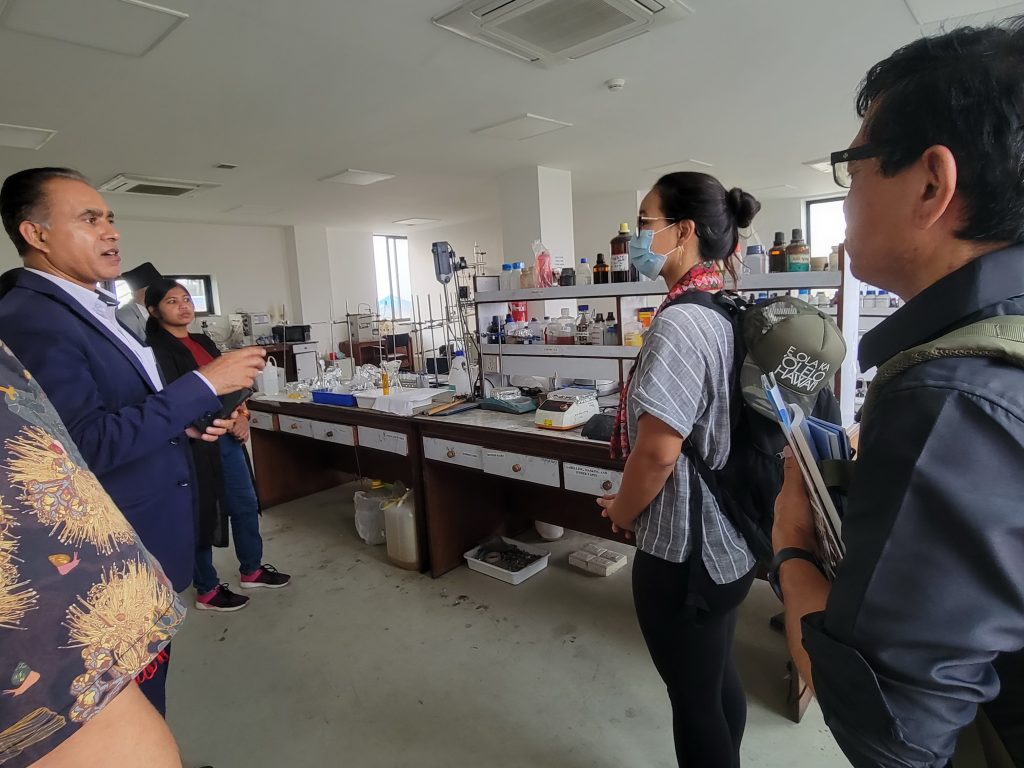UHMC Associate Professor of STEM and four students back from travel study trip to Nepal
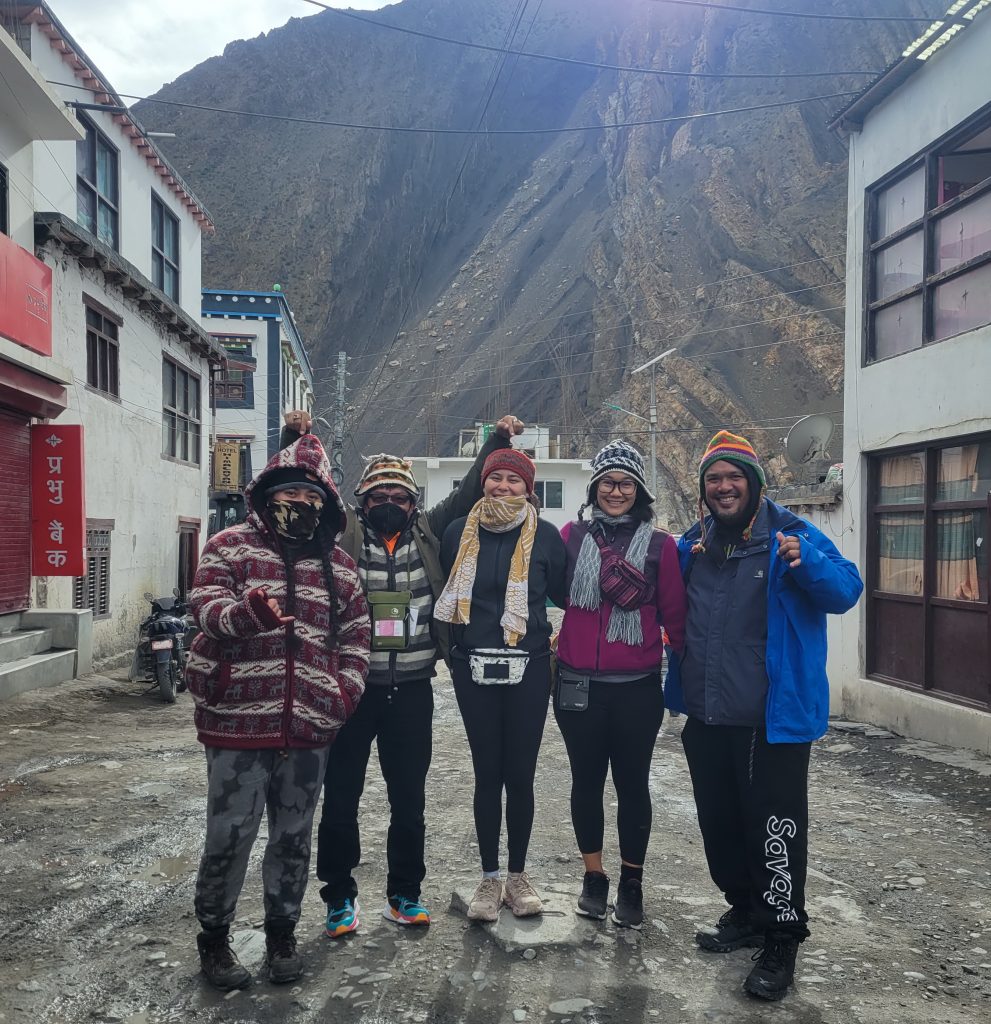
THE ADVENTURE OF A LIFETIME
Studying the physics of high altitude in action in Nepal…and so much more
After more than two years of planning, University of Hawai’i Maui College Associate Professor of STEM, Dr. Buddhi Rai, and four of his students went on a once-in-a-lifetime travel study trip to Nepal this summer. The educational objective was to study the physics of high altitude in action.
Tara Apo (Tara Ale-Magar), Dustin Palos (Dinesh Pandit), Brissa Christopherson (Bina Chhetri), ‘Ale‘a Kimokeo (Alka Karki) also signed on to immerse themselves in Nepalese life. (They even received Nepalese names in parentheses above). The scientific and cultural expedition turned out to be a life-changing experience for all of them, including Dr. Rai who visited places he had never been before, although he is a native of Nepal.
After arriving in Kathmandu, the group embarked on their three-week adventure by visiting several UNESCO Heritage Sites.
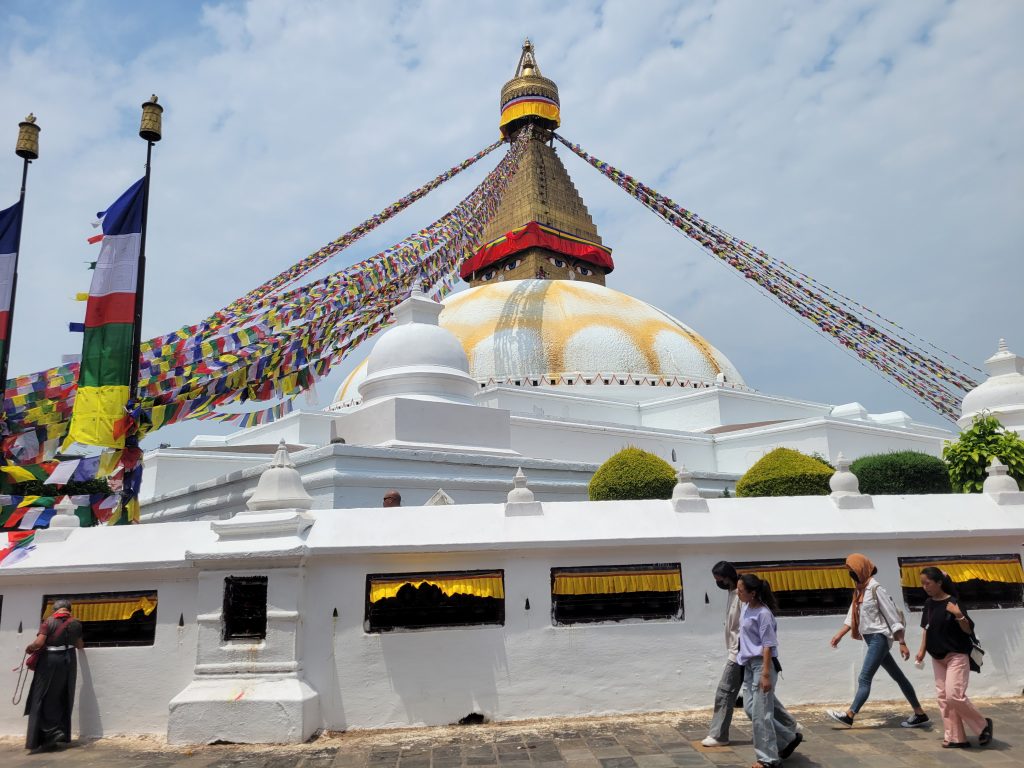
“Then we had two days of STEM meetings and activities with the government, World Wildlife Fund, Council for Technical and Vocational Training, and Nepal Academy of Science and Technology officials,” said Dr. Rai.
The group also started to get acclimated to high-altitude living – Kathmandu is at 4,300 feet elevation.
During the next week, the group engaged in science, physics, and climate experiments at altitudes reaching up to approximately 14,000 feet.
“This was a unique opportunity to immerse themselves in the vibrant high-altitude Nepalese lifestyle, providing invaluable insights into the Sherpa community. An exceptional aspect of this phase of the trip was being able to compare their own physiological responses and heart rates with those of the local Sherpa community members, fostering a deeper understanding of the impact of high-altitude environments on the human body,” according to a recap of the journey.
“From the beautiful city of Pokhara, we traveled deep into the Himalayan Mountain Range,” said Tara Apo. “It was breathtaking. We were in awe as we drove along the winding dirt road, next to a massive gorge with majestic rising mountains on either side of us. Then when you see the snow peaked mountains, it takes your breath away. Once you get past the Himalayan Mountain range, the climate is dry and arid – much like the crater in Haleakalā. Once in a while, we would pass a small village. It was astounding to come across such remote villages. We had a little ‘home stay’ at one such village called Jarkot Muktinath, about five hours from Tibet. It was so humbling to feel you were in one of the most remote places in the world.”
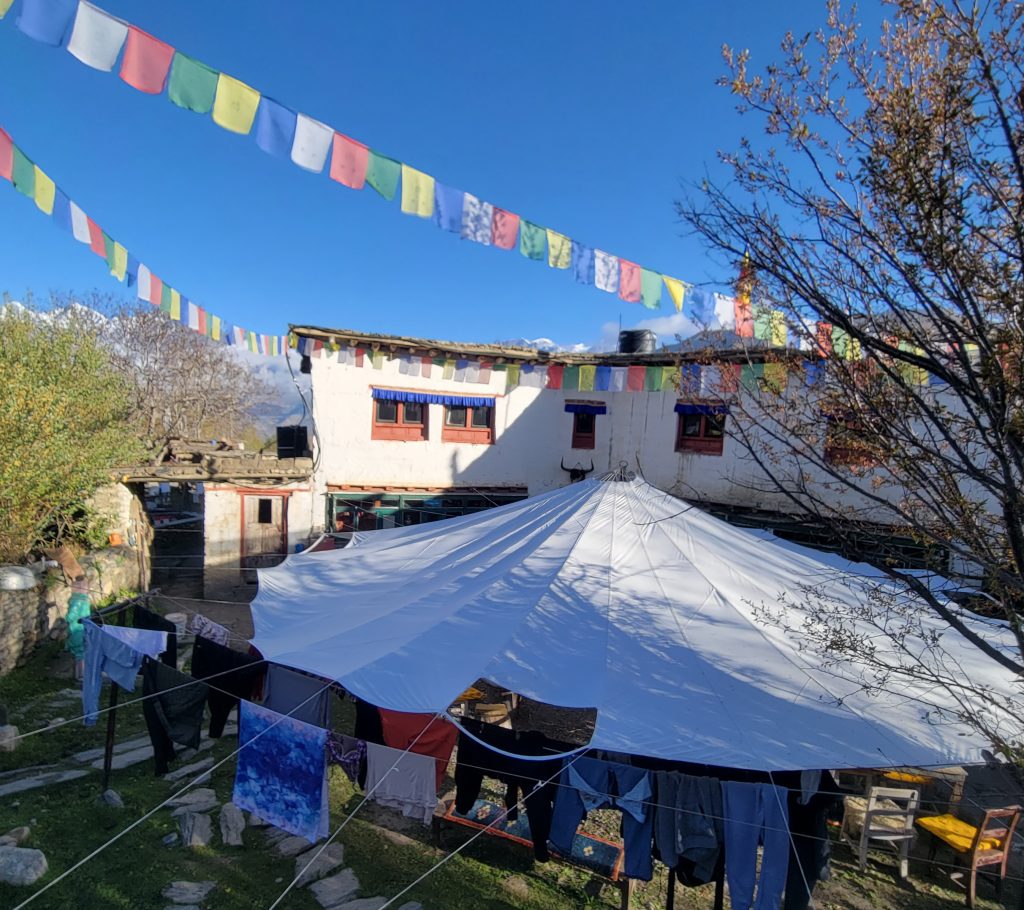
The next morning, however, Apo woke with a splitting headache and didn’t realize she was experiencing altitude sickness. “Buddhi texted us to check our oxygen levels because his was at 70% (normal is above 95%). “He prepared us,” explained Apo, “but experiencing it was a completely different thing.”
They were at 12,000 feet elevation and persevered on the day’s activities – a horseback ride, a hike to Muktinath temple, and continuing up the mountain as far as they could go towards the Thorong La pass.
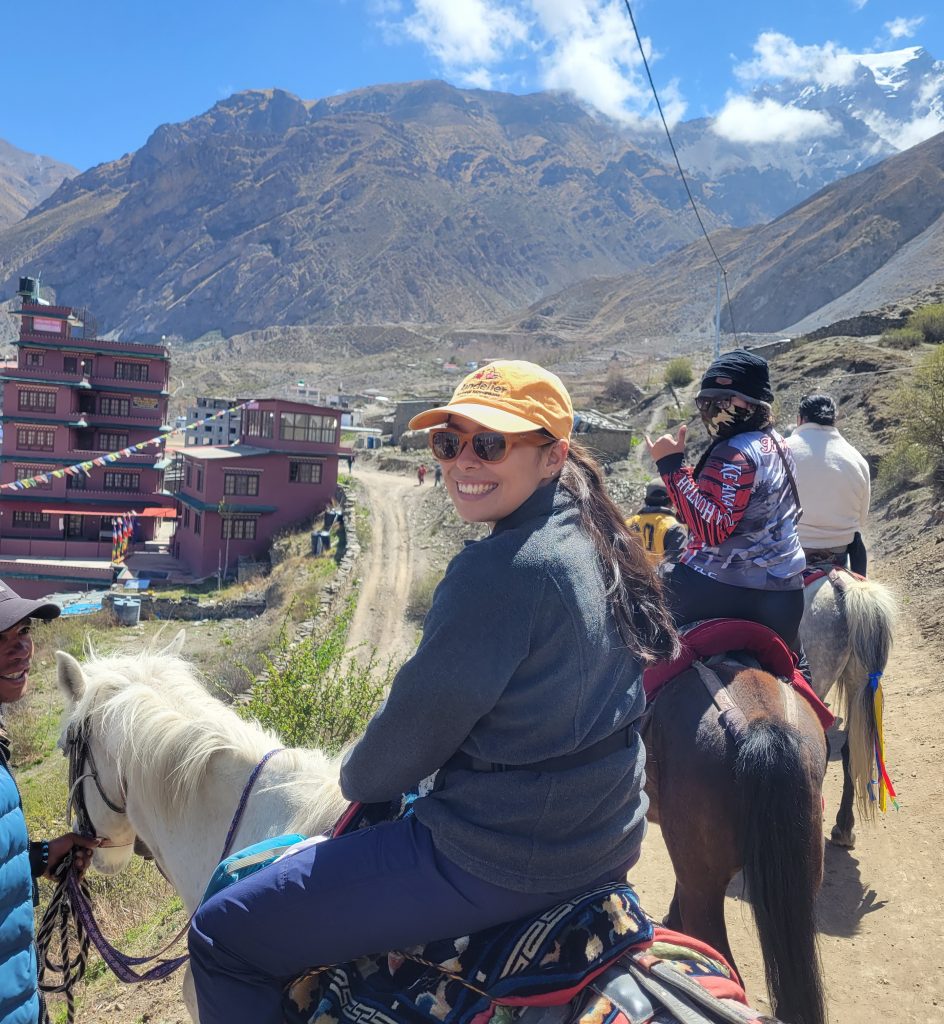
“It was incredibly hard to just put one foot in front of the other. We were so fatigued. But it was definitely interesting to experience,” said Apo. “When we finally left the high altitude area, our energy returned instantly.”
“The group replicated the high-altitude science as we descended to lower altitudes,” said Dr. Rai.“We also participated in community activities, lived in indigenous homes, ate home-cooked Nepalese food, and learned how the people live day-to-day.
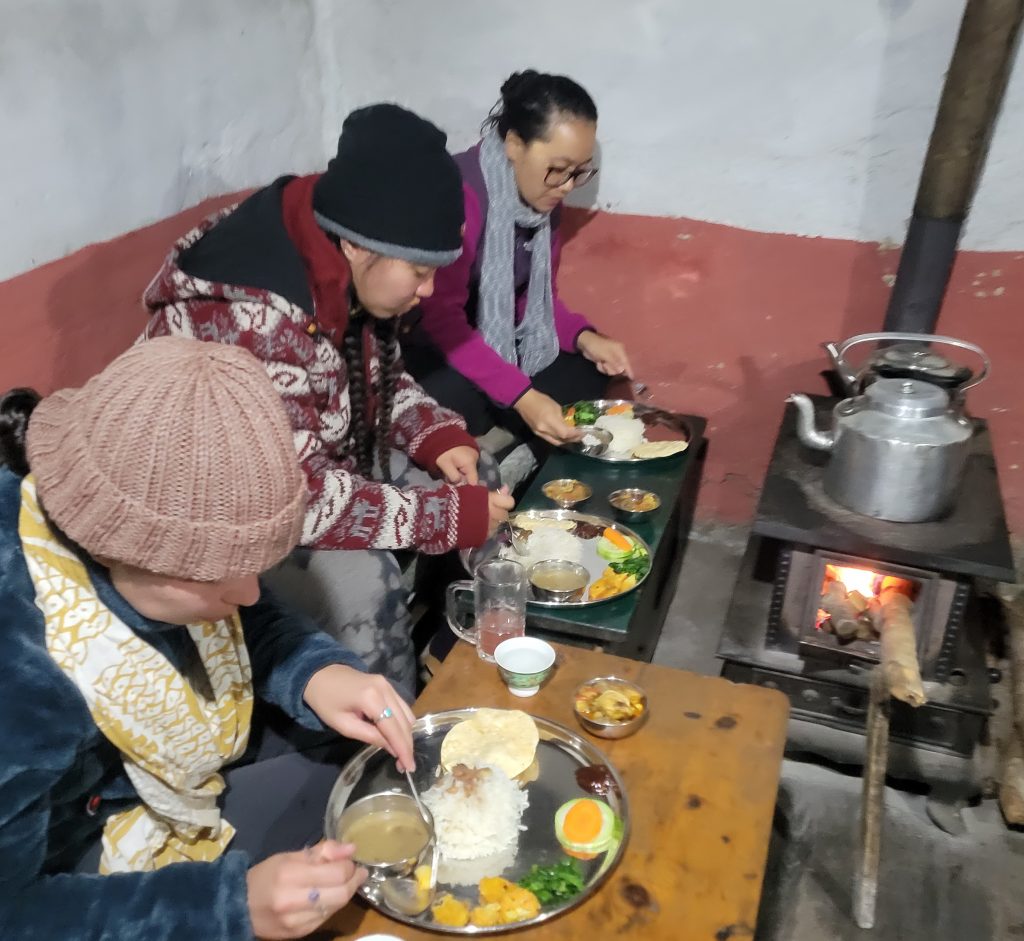
“On the way back to Kathmandu we visited religious sites and temples,” continued Dr. Rai, “and every member of my team was overwhelmed with the religious practices, the foods, and especially the flowers – marigolds are everywhere and also used for lei.”
At last, it was time to experience Mt. Everest. In addition to the visitor attractions, the group visited the Pyramid International Laboratory/Observatory, Nepal’s high altitude scientific research center at an elevation of 16,568 feet.
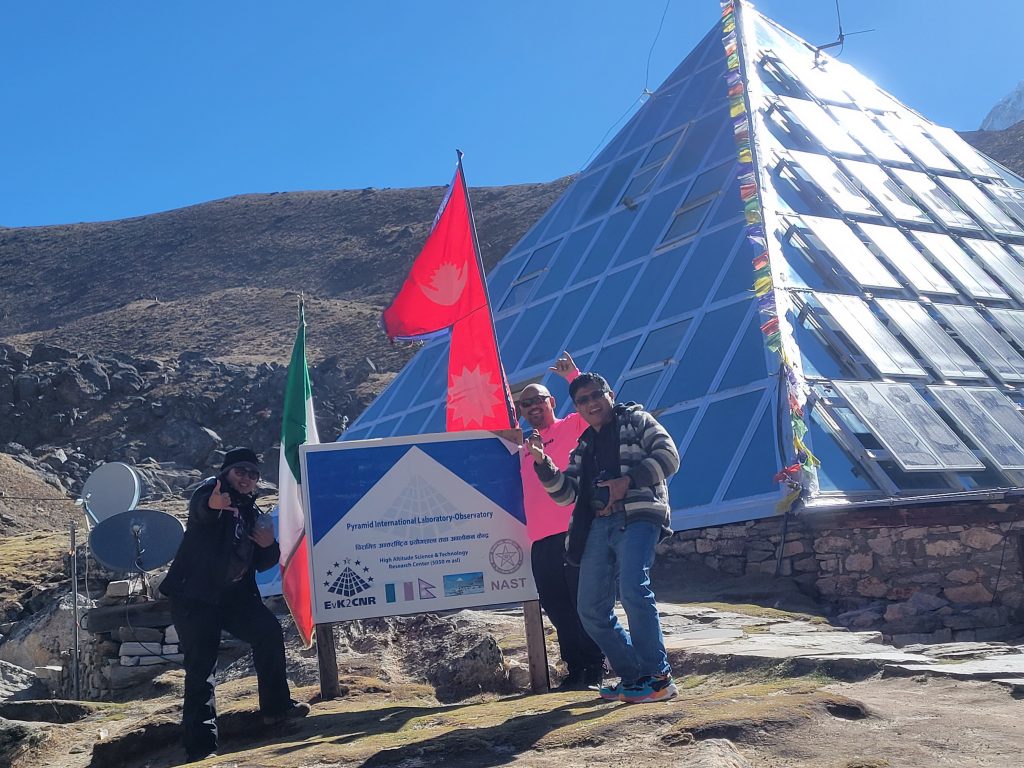
All four students either have or are pursuing degrees and advanced degrees in sustainable science and/or environmental management. Traveling from the lowest altitude in Nepal (-190 ft.) to 14,000 feet up into the Himalayas was eye-opening.
“We got to experience such a wide range of diversity of climates, ecosystems, biodiversity and diversity of indigenous people,” Apo explained. “We went right to the border of India – the hottest place I’ve ever been in my life – and also experienced the rainiest places. The ecosystems changed so dramatically within such short distances.”
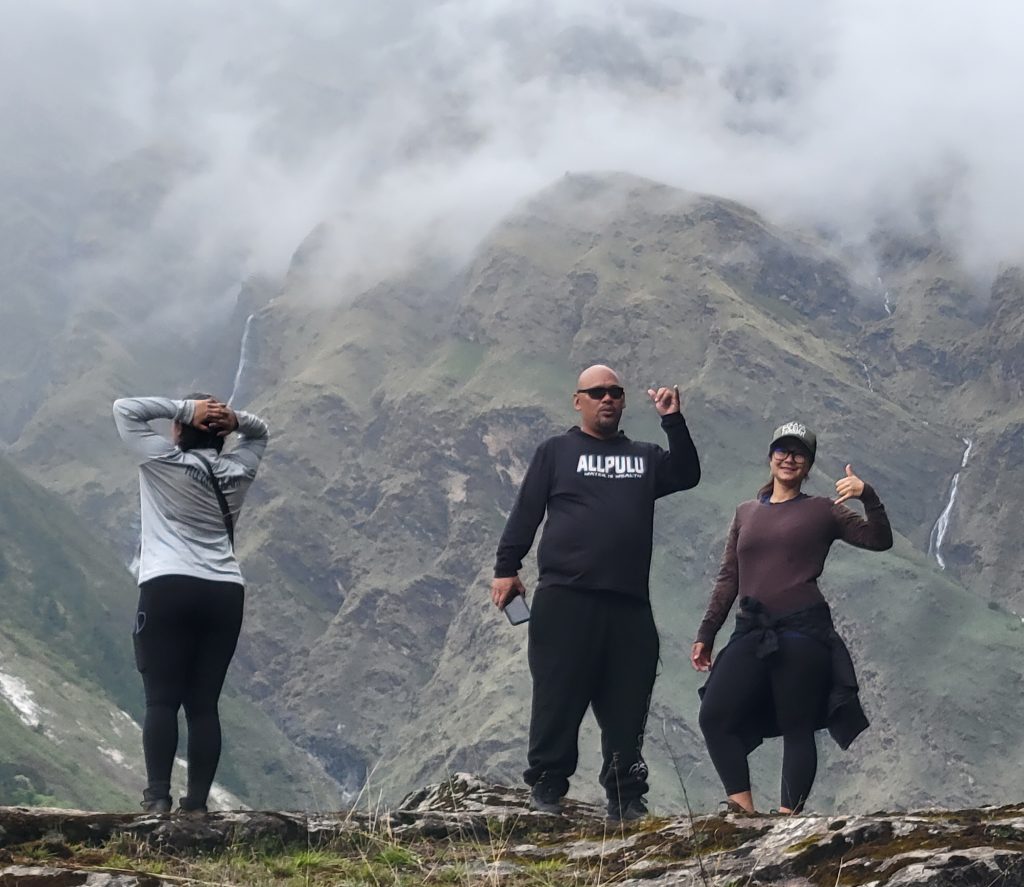
“It was thrilling to join our college’s Nepal travel study group to explore the culture in Kathmandu and some of their high-altitude science on Mt. Everest,” said UH Maui College Chancellor Lui Hokoana. “Buddhi is a Nepalese native and his knowledge and insights added immeasurably to the experience. The students were able to spend time with local families and to take part in a very significant cultural exchange. It was definitely a once-in-a-lifetime journey for them and for me, too.”
Over the course of the next six months, Dr. Rai plans to review the students’ reflective papers while continuing to compile his own notes, analyzing the wealth of data collected in Nepal and drawing comparisons with Hawai‘i’s sea-level-to-high-altitude data.
“This comprehensive research work holds promising prospects, with the potential for a significant paper to be submitted for publication and, possibly, for a documentary to be made,” according to a recap of the journey.
As is often the case, the most meaningful memories of a travel study experience are not necessarily academic.
“It was special to go with other Kānaka Maoli,” said Apo. “There was a kinship of culture that I noticed with the Nepalese people. They are kindhearted and they always treated us with respect and honor. The way they hosted us – very giving, preparing a big meal and having us eat first. It was the same kind of hospitality you would expect here. It was a beautiful cultural exchange.”
